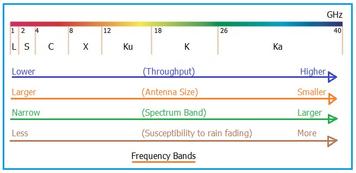
K Band: Frequency, Advantages, and Applications
Explore K band frequency characteristics, advantages like balanced throughput and antenna size, and applications in radar, satellite, and astronomy.
Advertisement

Explore K band frequency characteristics, advantages like balanced throughput and antenna size, and applications in radar, satellite, and astronomy.
A comparison of Kappa 438 laminate with FR4, highlighting the advantages of Kappa 438 for PCB manufacturing and RF applications.

Understand the fundamental differences between Kirchhoff's Current Law (KCL) and Kirchhoff's Voltage Law (KVL) for circuit analysis, focusing on current flow and voltage drops.
This article clarifies the distinction between Kilowatt (KW) and Kilowatt Hour (KWH), explaining their relationship to power and energy.

Explore the L band's frequency range (1-2 GHz), wavelength (15-30 cm), applications in communication, advantages, and disadvantages in various industries.

A comparison of the advantages and disadvantages of L, S, C, X, Ku, K, and Ka frequency bands, providing a guide for understanding the trade-offs of each band.

Explore the differences between Layered Division Multiplexing (LDM), Time Division Multiplexing (TDM), and Frequency Division Multiplexing (FDM), including advantages and applications.

Understand Level Crossing Rate (LCR) and Average Fade Duration (AFD) in radio propagation. Learn their definitions, formulas, and differences for wireless system design.
Explore the distinctions between licensed and unlicensed frequency bands, including access methods, interference management, advantages, and disadvantages.

A comparison of LiDAR and Time of Flight (ToF) technologies, outlining the operating principles, range, field of view, resolution, and other key differences.

Explore the pros and cons of linear polarization in radio signals, covering its principles, benefits, drawbacks, and applications.

Explore the key differences between linear, circular, and elliptical polarization, their applications, and advantages in communication, radar, and imaging systems.

Explore the differences between Line of Sight (LOS) and Non-Line of Sight (NLOS) wireless channels, their impact on signal quality, and common applications.

Explore the differences between low-pass and band-pass sampling techniques, including Nyquist criteria, anti-aliasing filters, and frequency translation.

Explore the pros and cons of LVDS (Low Voltage Differential Signaling) interface. Understand its benefits and drawbacks in various applications.

Explore the magneto-optic effect, its principles, and the working operation of magneto-optic modulators, especially in optical isolators.

An overview of Maxwell's equations, including Ampere's Law, Faraday's Law, and Gauss's Law for electric and magnetic fields.

Explore the analogy between mechanical and electrical systems. Discover how their differential equations are the same, despite differing physical components.

Explore metamaterials: man-made composites with properties not found in nature. Learn about their classification, realization process, and applications in antennas, sensors, and more.
Explore the distinctions between metasurfaces and metamaterials in terms of structure, dimensionality, fabrication, and applications in electromagnetic wave manipulation.
Advertisement